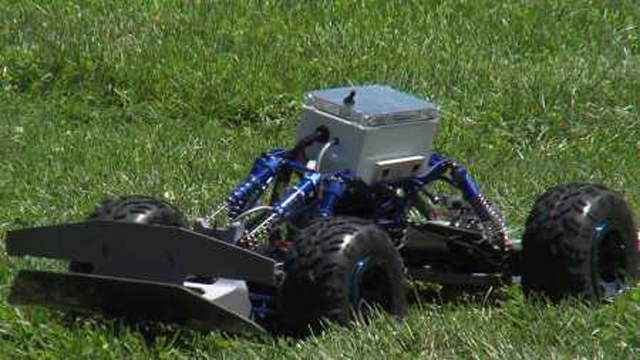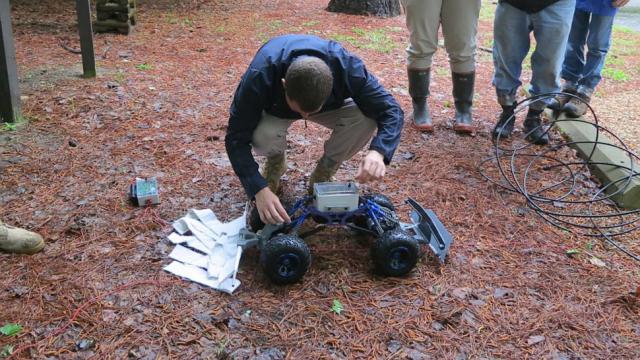Among animals you don’t want sucking sucking your blood, ticks are near the top of the list. These hemophilic arachnids don’t just help themselves to your vital fluids, they are also host to nearly a dozen human pathogens including Lyme disease, which afflicted more than 24,000 people in 2011 alone, and the Spotted Rocky Mountain Fever that claimed the life of a six year old girl in the US earlier this year. Lucky for us, ticks are pretty stupid. They’ll hop aboard anything that so much as looks and smells like a suitable host — even if it’s coated in pesticide. It’s this overzealous nature that Virginia Military Institute engineers hope to exploit with their ingenious new tick-hunting rover.
Ticks can’t fly like mosquitos or cover large swaths of ground in single leaps like fleas, so they’ve developed very sensitive faculties to detect potential hosts — specifically the ability to sniff out minute traces of exhaled CO2 and ground vibration from walking up to 15 metres away. By following these sensory clues, the ticks can hone in on a host and climb aboard for a quick snack. The VMI “Tick Rover” employs biomimicry to use the tick’s own hunting prowess to lure them to their doom.
“It’s got carbon dioxide. It’s something moving. It’s something that is very easy to cling to. And those are the kinds of behaviours we exploited, basically… successfully,” David Livingston of VMI told ABC News affiliate WSET.
Ticks want to smell CO2, the Tick Rover gives it to them in the form of a long, CO2-exuding hose laid across a test field. This hose draws all of the ticks to one side of the testing area and concentrates them over the course of 30 minutes. Then, an RC truck dragging a piece of cloth soaked in pesticide drives itself along the length of the hose using embedded sensors to navigate. The ticks think their meal’s arrived and gladly hop onto the cloth, coating themselves in pesticide and dying within hours.

“When they sense carbon dioxide they sense a blood meal is nearby and they run. You can actually see them scuttle onto this tube and then run along it searching for where that live animal is,” Dr. James Squire, project lead and professor of electrical engineering at VMI, told ABC News. “The cool part about this is that it leaves no pesticide in the environment,” since the poison-laced cloth is collected and disposed of after use.
The method isn’t foolproof, as other ticks can repopulate the cleared area, but it does provide about 24 hours of relief. The VMI team hopes to eventually commercialise the technique for home pest services but first further study into the effectiveness of the method is necessary. [ABC News – CDC – Wikipedia – Images: ABC News]
